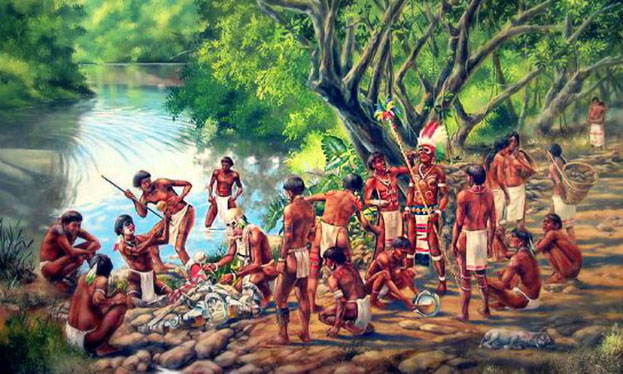Uncover Aruba`s insights through Etnia Nativa
Article by Etnia Nativa call us 592 2702 and book your experience!
Etnia Nativa through Island Insight facilitates cultural awareness, education and safeguards Aruba’s heritage by elevating each reader into an island guardian state of mind. Be encouraged to discover in every episode the true native effect, live it and unveil more reasons to love Aruba behind our beaches by spicing up your stay in an incredibly wonderful way through this cultural blog.
Our island is a tiny tourist destination with a fragile ecosystem, covering thousands of years of history. Here is where Etnia Nativa’s main objective comes to mind through educating the readers over Aruba’s heritage. We believe in when you love and value what you have; ones greatest desire becomes to protect it.
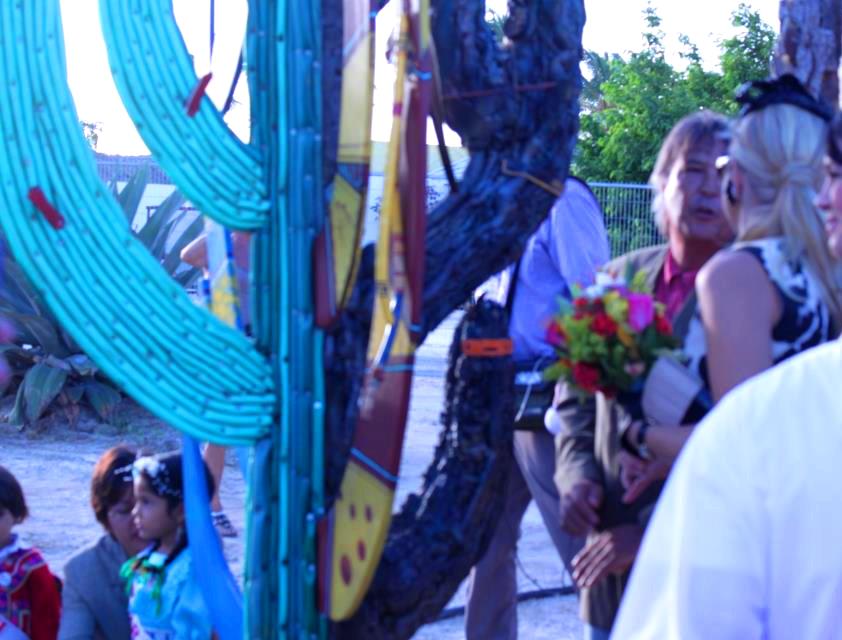
In this episode we want to share a beautiful project with you that remains in the memory which message behind the expore grettably did not receive the cultural awareness and respond it had deserve. Etnia Nativa had the joy of participating in the person of our curator Mr. Anthony Croes with the work called “Breba pa unda”? wich mean: (Where are we going to Mr. Cactus?)
This fabulose open air expo was another iniciative an also renowned local as well as international artist in the person of Mr. Stan Kuiperi and his Aruba International Arts Foundation, project known as “Trankera di Arte” or Art fance.
This happening was inaugurated by Her Majesty Queen Beatrix of the Netherlands, accompanied by His Royal Highness Prince Willem Alexander and Princess Máxima on October 28, 2011 during this official opening of the first phase of the new Linear Park project in Oranjestad.
It was a very special day for the public and all the 26 participants, where each one very well chosen by the curator Kuiperi, since they are all top recognized local contemporary artists. Each artist had received a standard three-dimensional plywood cactus model mounted on a platform, a sculpture scelleton which purpose was to represent a “tall cadushi” (tall candelabra cactus). The name of the project alluded to the “trankera” that since the time of our ancestors traditionally used these tall cactus among other xerofitic vegetation to close and thus delimit each plot of land intended to be exploited. A “trankera”, a tall cactus hedge that was impenetrable.
The project itself had as its main inspirational purpose and the preservation of the natural environment of Aruba. The objective was to raise awareness of our local environmental problems and natural historical elements of our existance, specifically the role of tall cacti on the desert landscape of our island.
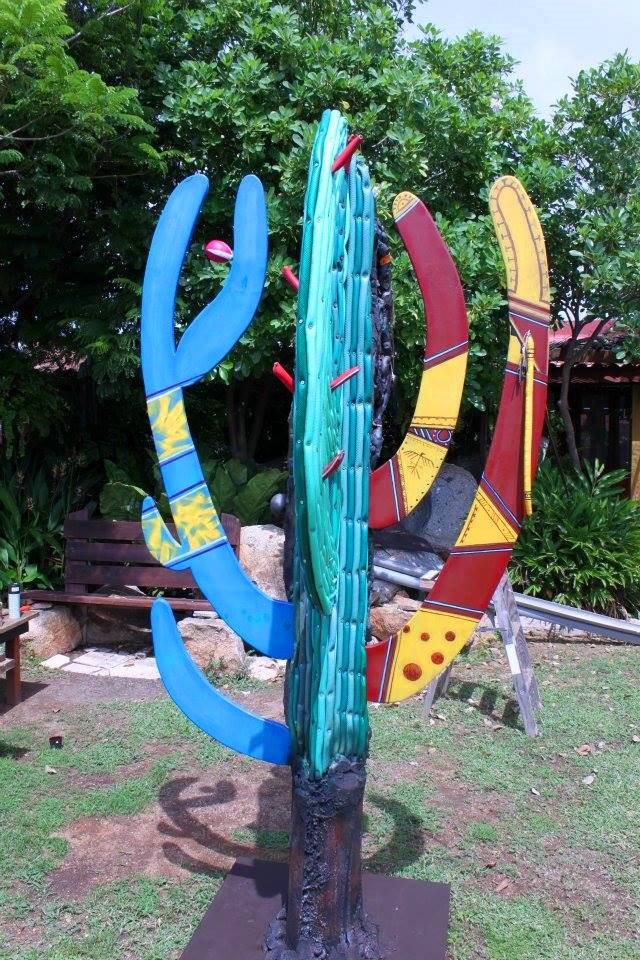
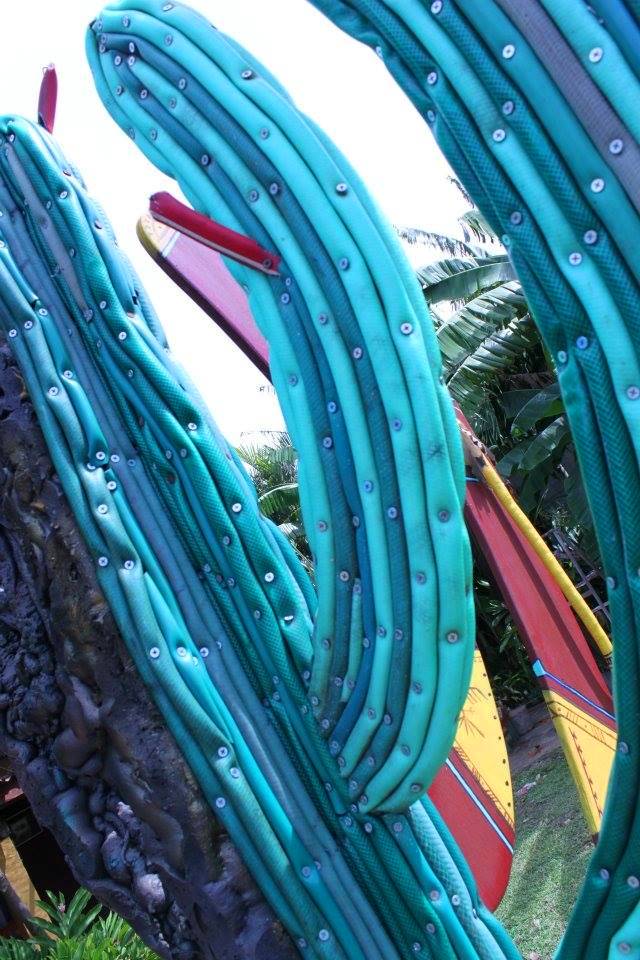
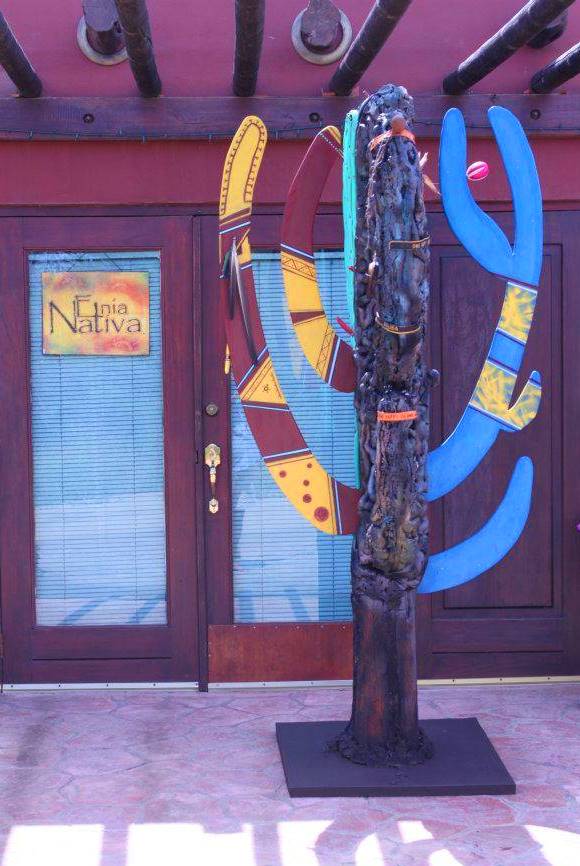
This all because of our astonishment and indignation how devastating and destructive uncontroled development can affect our daily spiritual peace and health in general.Artist, envioramentalist and nature lover are still fighting for the conservation of thenatural and native environment, we saw how one by one “the cadushies” were being demolished giving way to more and more buildings and constuctions.
Etnia Nativa`s participation with its own wooden sceleton, provided by the Aruba International Arts Foundation, exposing a sculpture which was dressed up for the occasion with the appropriate tones, accompanied by the deterioration that silently devours our islands environment and still a matter’s today. This particulatr art work was elaborated solely with recycled material, in which our artist expresed his concern to the world showing what was realy happening through “progress” on his beloved rock.
With “Breba pa unda”, we had achieved an artistic objective. However the work of bringing and create awareness on a higer consiousness regarding our natural enviroment is an daiy task by exposing the deterioration of our natural heritage as the result of unsustainable development.
Thus, each of the 4 wind directions, parts of the three-dimensional sculpture took on a special meaning and design. The color green ( recycled garden hose) represented the nature of Aruba, the brown color (burnt polystyrene) showed the nature that Aruba have lost while the other two remaining parts represents; one had the color of the original Aruban flag colurs and the other the symbols of our indigenous heritage.
Trankera di Arte was an extraordinary collective public art project that knew how to combine contemporary art, nature and cultural history but unfortunately did not stop the fall of “the tall cadushis” many of which have been lost forever!
If you love Aruba its origins and its cultural heritage, be part of the exclusive visitors of Etnia Nativa: a cozy museum/home.
Etnia Nativa a private residential houses collections of native art, archaeological artifacts and historic furniture, while the facilities themselves are the result of the transformation of recycled materials. Meet Anthony Croes, our columnist at his home! Book your visit Whatsapp + 297 592 2702- or mail: etnianativa03@gmail.com











